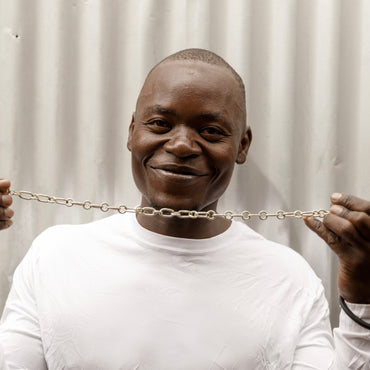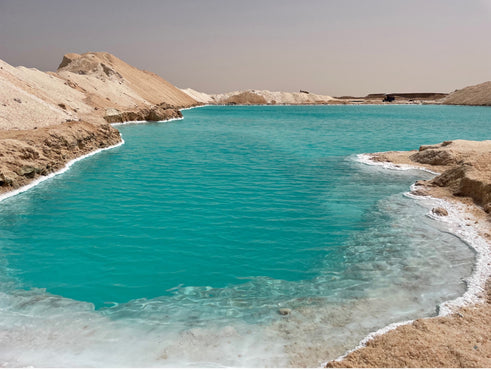What Makes Jewelry Sustainable?
With a lot of buzz around sustainability I thought I’d break down what sustainable jewelry is and isn’t. Before we dive into the factors that contribute to a higher sustainability value in jewelry, just know that any item that reduces its impact on the planet and people could be considered a sustainable alternative. Because metals and precious gems come from some of the most vulnerable countries it warrants a discussion.
People & Supply Chain
A transparent supply chain starts with the people that are entangled in it. Each piece has a chance to tell stories of empowerment, fairness, and respect of skilled artisans and makers. Making sure the working environment for these makers and manufacturers is good and dignified is at the core of a values based manufacturing process. This means vetting for child labor practices and qualifying their skills. Unfortunately this rules out the precious gems and diamond industry which is mired in labor abuse and involves an extensive refinement process that ultimately damages oceans, rocks, and atmosphere. If you’re considering purchasing, make sure you’re checking for certification of the gems and the entire supply chain all the way from raw material sourcing to doorstep. Organizations like the Responsible Jewellery Council are lifting the veil in this space and creating the foundations of a more sustainable supply chain that values its people.
Materials & Low Impact Processing
From reclaimed/recycled metals to locally sourced raw materials, the best sustainable jewelry companies will find new ways to keep their materials within a closed loop. For example, at Blooh we use up-cycled horn or bone from the local cattle industry in Kenya to integrate and reimagine them into beautiful modern jewelry.
The jewelry industry, not unlike everything else in fashion, is prone to a lot of waste from overproduction which ultimately ends up in landfills. To combat this, sustainable practices will involve reducing frequent and long transportation of raw materials and the overuse of machinery in the creation process. Minimizing water use through recycling systems, and practicing responsible waste management are some other ways to lower the environmental footprint during production. Some might use fair trade certified materials or other competitive standards to prove their responsible practices.
However, as important as third party certifications are, they are not the end all be all of qualifying ethical supply chain practices. Many verification companies involve complex and drawn out certification processes that are equally expensive to maintain which many emerging brands can’t afford, especially when starting out. Keep this in mind as well as the company’s age before setting rigid standards in qualifying the ethos and principles. Instead, look at their track record, commitments, and stories shared.
Transportation
Behind the promise of sustainable jewelry lies a commitment to reducing carbon emissions and any run offs to soil and the oceans. By prioritizing local sourcing and production, sustainable brands minimize regular use of long transportation routes before production has even begun. Prioritizing local producers the local economy ensures each piece of jewelry carries a smaller environmental impact and keeps work and investment within the local economy. Sustainable brands may use a small batch production model that is in line with their demand every month (or some other 30 days + interval) so as to reduce waste and frequent transportation.
Another way of lowering environmental impact is by reducing plastics from the production facility to the last mile. Over time these materials compound so a biodegradable and recyclable packing alternative goes a long way.
Lifespan
Fashion trends come and go, but sustainable jewelry can transcend time. Each piece is meticulously crafted with high grade recycled materials that may be multi-functional ensuring longevity and reducing the need to buy so many pieces. Take a look at one of our recent additions like the Amani Hoop or the Jabali Hoop Set which can be worn multiple ways.

Why Invest in Sustainable Jewelry?
From transparency to accountability, investing in good sustainable jewelry pieces is carrying a piece of good ethics. By doing this you’re sending a clear message to the industry that there is demand for a clean and ethical supply chain. This has the power to catalyze the networks that lead to the creation of more such brands and help sustain the ones that can barely survive without radical support of this mission and ethos. Research and choose brands that align with your own values and invest in them over time. Pick pieces for their timelessness and high quality and wear them as a statement or everyday as a reminder of the change you want to create in the world.

Blooh artisan at workshop in Kenya




